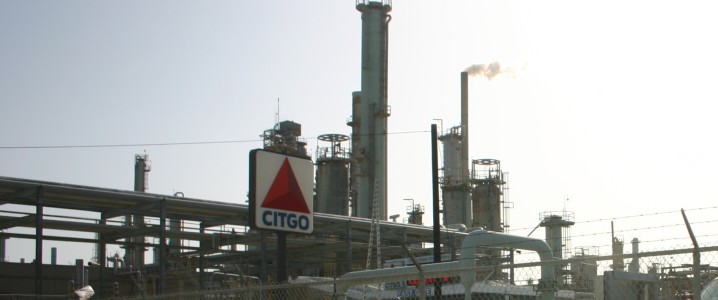On Monday, Trump presented a brand-new policy tool to the world, “secondary tariffs.” That is, if other countries buy Venezuelan oil and gas, all of their trade with the U.S. will be subject to a 25% tariff. Venezuelan exports are not subject to tariffs, but the buyers are.
The message is actually very straightforward. All countries around the world are discouraged from buying oil from Venezuela, as they face the threat of tariffs, while exports that go straight to the U.S. are encouraged.
This measure also needs to be considered alongside the current sanctions regime. Only a handful of companies have licenses from the Office of Foreign Assets Control (OFAC), which would allow them to ship Venezuelan oil to the U.S.
Chevron, the main company shipping oil between the two countries, will see its license expire on 27 May. Interestingly, it was extended for an additional two months on the same day that the secondary tariffs were announced. It remains to be seen whether the Treasury Department will draft a new license for the energy giant, or even for other American firms.
If we stay on this trend, Trump would be taking a whole new approach towards the South American nation. In his first administration, he tried to isolate the country economically and politically to oust Nicolás Maduro’s regime. Joe Biden tried to leverage existing sanctions to push for a democratic election. But now, Trump 2.0 would be looking out for the interests of American businesses and consumers first, at the expense of other considerations.
Related: BP Approves Major Trinidad and Tobago Natural Gas Project
It is necessary to say, first, that inside the administration there are different views on Venezuela. Figures such as State Secretary Marco Rubio, and Mauricio Claver-Carone propose intensifying sanctions once again. Meanwhile, others like presidential envoy for Venezuela Richard Grenell and Senator Bernie Moreno prefer targeted engagement on issues such as immigration.
In an interview last month, Grenell said “We are very clear about the Venezuelan government and Maduro, but Donald Trump is someone who does not want to make regime changes. He is someone who wants to do everything he can to make the U.S. stronger, more prosperous.”
An America First strategy towards Venezuela
There is a paper by Brian Fonseca, from Florida International University, that flew under the radar when it was published in December. But it has an uncanny resemblance to the measures that Trump announced this week. The title: “Strategic Engagement in Venezuela: Advancing U.S. Interests Under an America First Agenda”.
The policy position paper argues that, given both Venezuela’s enormous hydrocarbon reserves—the largest in the world—and its political conflict, it will need a complex form of engagement from U.S. policy makers. One of Fonseca’s key proposals is “secondary sanctions.” In other words, give American energy companies more space while keeping rivals out.
The idea behind this paper is to invert the current advantages and disadvantages. Economic and financial sanctions affect first and foremost U.S. citizens and companies, and secondly their allies like Europe and India. It is rivals like China, Iran, and Russia that are able to circumvent sanctions.
In the Venezuelan case, the outcome was very clear. During the period of strictest sanctions, China was able to buy oil from the South American country at steep discounts—$30 to $40 per barrel—while Western-based companies were shut out of the market.
Now, instead of secondary sanctions, Trump has announced secondary tariffs. This is an interesting choice, as it makes use of a different toolset. U.S. sanctions leverage the absolute hegemony of the dollar and its financial system, whereas tariffs are as powerful as the size of the American market.
With secondary tariffs, a country like Spain would have to choose between importing Venezuelan crude or facing a 25% tax on all its trade with the U.S. It will have to weigh the two options: can I live without Venezuelan oil? What if I get a tariff on all my exports to the U.S.?
Venezuela’s trading partners react
Who is buying Venezuelan oil? According to Reuters, which has access to shipping data, China remains the largest buyer despite its share having declined in the last year. In February, it bought an average of 500,000 barrels of crude oil per day. The U.S. would come second, with 240,000 bpd. Then, India and Western Europe imported 70,000 bpd each, and Cuba 40,000 bpd.
The impact on China is still unclear. If Beijing takes tariff threats seriously, it could start monitoring deliveries from Venezuela with its own enforcement mechanisms. Alternatively, we could have a scenario with tight sanctions, where Chinese refineries simply kept buying Venezuelan crude at steep discounts.
China’s Foreign Affairs Ministry has already denounced secondary tariffs and “illegal unilateral sanctions” from the U.S. against Venezuela. Even if it decided not to buy from the South American country, its companies are producing over 110,000 bpd in joint operations with PDVSA.
Europeans will likely end up rerouting their shipments to the East Coast refineries. However, the Spanish government and the European Union are looking for ways to protect their companies from secondary tariffs and sanctions. Madrid has announced that it could take retaliatory measures. Meanwhile, according to Reuters, the refiner Reliance Industries will cut Venezuelan imports for India to stave off tariffs.
Only Cuba could be seeing Trump’s announcement as a moment of respite. Shipments to the island fell by half from 2023 to 2024, as PDVSA preferred to send its oil to cash-paying customers, rather than swap for debt or goods and services. Cuba’s collapsing electricity grid might end up receiving a helping hand if Venezuela runs out of export destinations.
By Elias Ferrer for Oilprice.com
More Top Reads From Oilprice.com
- Trump: 25% Tariff On Anyone Who Buys Venezuelan Oil & Gas
- CNOOC Profit Jumps by 11% on Record Oil and Gas Production
- Glencore Cuts Coal as Market Glut Smothers Prices


















